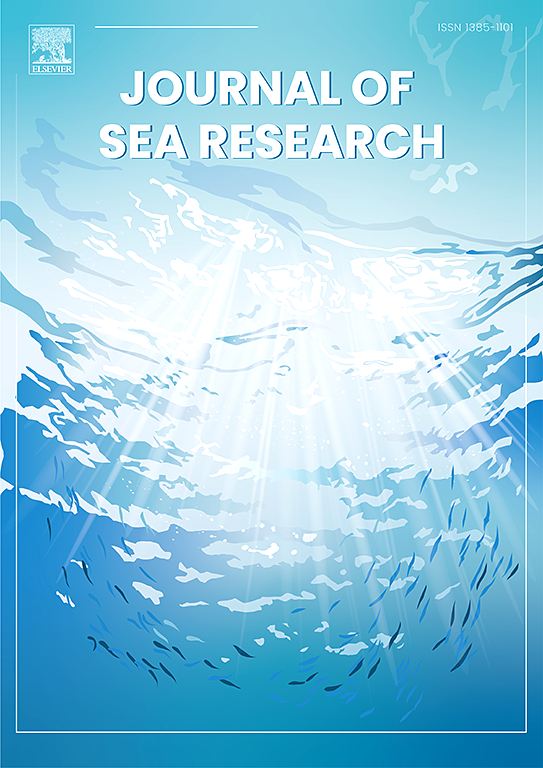Effects of western boundary currents and sea surface temperature anomalies on interannual variability of chub mackerel abundance in the Northwest Pacific
IF 2.9
4区 地球科学
Q2 MARINE & FRESHWATER BIOLOGY
引用次数: 0
Abstract
The abundance of chub mackerel (Scomber japonicus) in the Northwest Pacific has undergone significant changes in recent decades. To investigate the long-term and short-term impacts of environmental factors on the abundance of chub mackerel, Kuroshio volume transport in summer and winter, the Oyashio area, the Oyashio southern limit, and the Sea Surface Temperature Anomaly (SSTA), were selected to construct the ARDL-ECM model based on the Autoregression Distributed Lag (ARDL) method for 3 age groups with resource abundance as the response variable. The results showed that in short term effects there is a positive correlation between Kuroshio intensity and the chub mackerel abundance in winter, but a negative correlation in summer. Oyashio area can impact the fish abundance under 2 years old significantly (p < 0.001) and the change of Oyashio sourth limit only has a significant impact on the abundance of 0-age fish (p < 0.001). In the long-term relationship, Kuroshio significantly influences the abundance of fish aged 3 years and older (p < 0.001). SSTA had a significant impact on the abundance of all 3 age groups (p < 0.05), while Oyashio area may influence the fish abundance under 2 years old (p < 0.05). Furthermore, Oyashio south limit was found to affect the abundance of fish aged over 1 year (p < 0.01). SSTA can increase the abundance in both short term (p < 0.001) and long term (p < 0.001).The findings of this research may enhance our understanding of the variations in chub mackerel abundance in the Northwest Pacific.
西部边界流和海面温度异常对西北太平洋鲐鱼丰度年际变化的影响
近几十年来,西北太平洋鲐鱼(Scomber japonicus)的丰度发生了重大变化。以资源丰度为响应变量,选取环境因子对鲐鱼丰度、夏季和冬季黑潮量输运、好潮地区、好潮南缘和海温异常(SSTA)的长期和短期影响,构建了基于自回归分布滞后(ARDL)方法的3个年龄段的ARDL- ecm模型。结果表明:在短期效应中,黑潮强度与鲐鱼丰度在冬季呈正相关,在夏季呈负相关;杂潮地区能显著影响2岁以下鱼类的丰度(p <;0.001),而大潮南边界的变化仅对0龄鱼类丰度有显著影响(p <;0.001)。在长期关系中,黑潮显著影响3岁及以上鱼的丰度(p <;0.001)。SSTA对所有3个年龄组的丰度都有显著影响(p <;0.05),而洋潮地区可能会影响2岁以下鱼类的丰度(p <;0.05)。此外,还发现了亲潮南边界对1年以上鱼龄丰度的影响(p <;0.01)。海温可以在短期内增加丰度(p <;0.001)和长期(p <;0.001)。这项研究的发现可能会增强我们对西北太平洋鲐鱼丰度变化的理解。
本文章由计算机程序翻译,如有差异,请以英文原文为准。
求助全文
约1分钟内获得全文
求助全文
来源期刊

Journal of Sea Research
地学-海洋学
CiteScore
3.20
自引率
5.00%
发文量
86
审稿时长
6-12 weeks
期刊介绍:
The Journal of Sea Research is an international and multidisciplinary periodical on marine research, with an emphasis on the functioning of marine ecosystems in coastal and shelf seas, including intertidal, estuarine and brackish environments. As several subdisciplines add to this aim, manuscripts are welcome from the fields of marine biology, marine chemistry, marine sedimentology and physical oceanography, provided they add to the understanding of ecosystem processes.
 求助内容:
求助内容: 应助结果提醒方式:
应助结果提醒方式:


